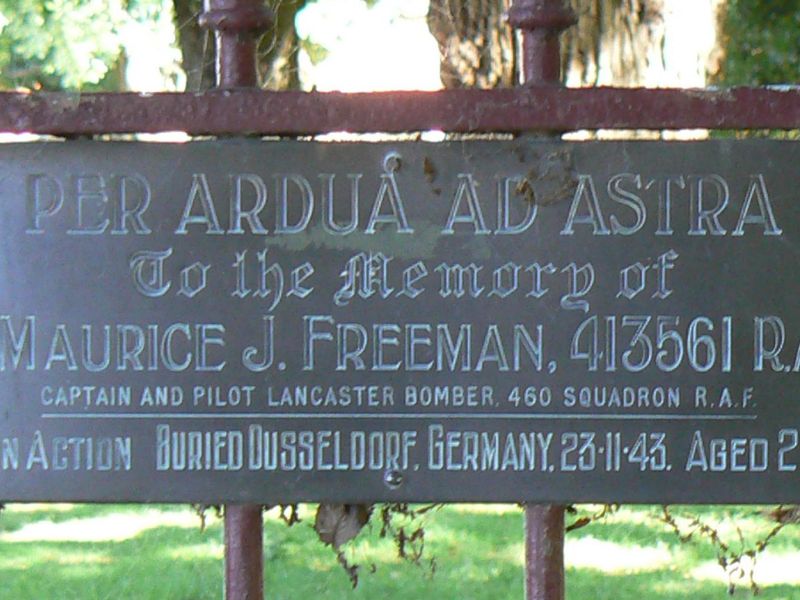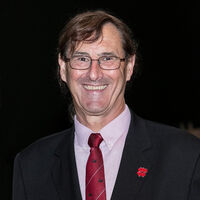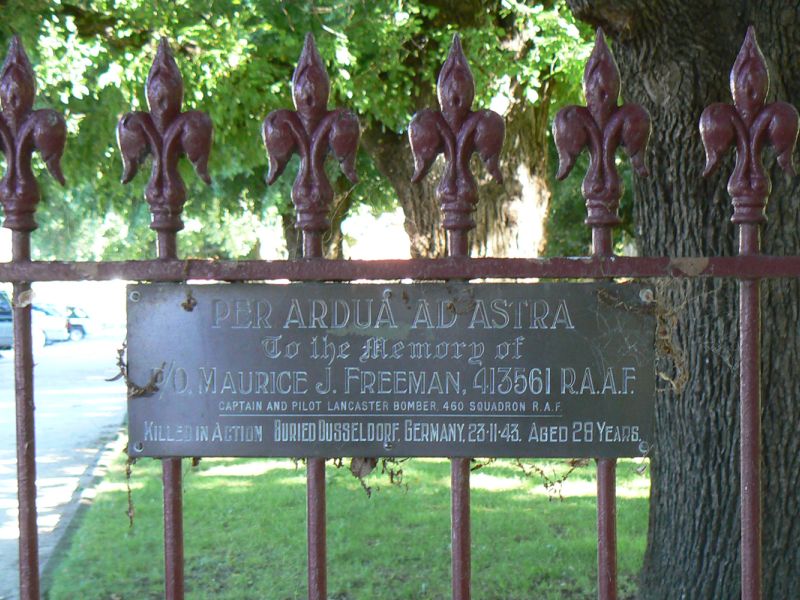“Greater love no man hath Than to give his life For his friends”
The Maurice Freeman Memorial Gates were erected in honour of Pilot Officer Maurice Joseph Freeman, 460 Squadron, Royal Australian Air Force. The gates were given to his mother in 1949 by a local citizen. They were described at the time as “…handsome old iron ones and would be a fitting memorial to one of Bathurst’s most versatile footballers.”
Maurice Freeman was born on the 20th of September 1915 in Bathurst, New South Wales, to Michael Joseph and Agnes Mary Freeman. He was one of six siblings.
Maurice attended St Stanislaus College, before going on to work as a station overseer at a property near Bathurst. He became a prominent league footballer, playing for Charlestons and captaining the district team, as well as being known in cricket and tennis circles.
He enlisted in the Royal Australian Air Force in Sydney on the 12th of September 1941, just before his twenty-sixth birthday. His two brothers Pat and Terry also enlisted in the RAAF during the war. His father, Michael, joined the Royal Australian Engineers after his three sons had entered the RAAF.
After attending No. 4 Elementary Flying Training School at Mascot Airport, No. 10 Elementary Flying Training School at Temora, and No. 6 Service Flying Training School near Molalla, Freeman had a period of final leave before heading to England for overseas flying duty.
As part of the Empire Air Training Scheme, Pilot Officer Freeman was one of almost 27,500 RAAF pilots, navigators, wireless operators, gunners, and engineers who, throughout the course of the war, joined squadrons based in Britain. In November 1942, he embarked for England.
Once he completed his training in England, he was posted to the Australian 460 Squadron. This was the most highly decorated Australian squadron in Bomber Command, and the squadron that suffered the highest casualties. Flying Wellingtons and then the four-engine Avro Lancaster heavy bomber, the squadron lost over 1,000 men: Australian, British, Canadians, New Zealanders and South Africans. Almost 600 Australians from 460 Squadron are listed on the Roll of Honour.
On the night of the 23rd of November 1943, the aircraft of 460 Squadron were taking part in a raid on Berlin. The Lancaster being piloted by Maurice Freeman, was shot down and crashed near Duisburg. Four of the British and Australian crewmen managed to bale out and became prisoners of war but the other three crew members, Australian Flight Sergeant Douglas Aberle, British airman Thomas Elliott, and Pilot Officer Maurice Freeman, were killed. Maurice Freeman was 28 years old.
His body was recovered from the crash site and buried in the North Military Cemetery at Dusseldorf . He was later re-interred at the British and Commonwealth Reichswald Forest War Cemetery, at Kleve in Germany, where he is buried near his crewmates under the epitaph chosen by his family:
“Greater love no man hath Than to give his life For his friends”
Sources:
National Advocate (Bathurst, NSW : 1889 - 1954) (via Trove)
AWM Last Post Ceremony 30th October 2017 (author Lachlan Grant)

 Henry C Moulds
Henry C Moulds